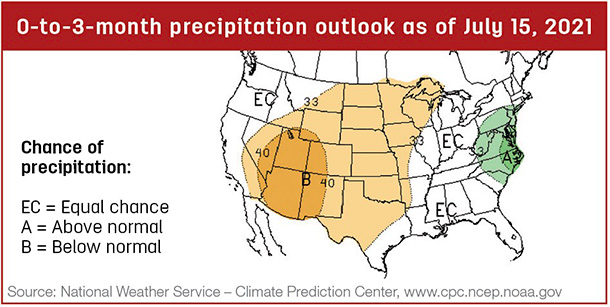Using stockpiled forages (aka standing hay) can help reduce hay feeding and winter supplementation needs for cow-calf producers. Stockpiled forages are just forages that are grown at a certain period of time so they can be utilized at a later date, when that forage species is not growing due to cold temperatures or lack of rainfall.
The best way to manage and use these forages will vary considerably depending on geographic location, weather conditions and forage species. In general, stockpiled forages grown in higher-rainfall areas should be grown no more than 60 to 75 days prior to frost and used within 45 to 60 days after frost. These forages need to be used soon after frost because of rain knocking the forage down and moisture leading to increased microbial growth and deterioration of the forage. In contrast, native forages grown in low rainfall, arid areas may be grown in a short period when it rains and then used six to nine months later.

The best practice to stockpile introduced forages like bermudagrass in higher-rainfall areas would be to graze the pasture down to a stubble height of 3 to 5 inches or cut it for hay. After this, the field should be fertilized with about 60 pounds of actual nitrogen per acre to encourage new growth until frost; apply potassium if needed. Frost doesn’t impact the quality of forage; it just stops it from growing. When done correctly, forage grown in this manner and time of year will be high quality.
As indicated earlier, forage should be used over the next 45 days or so, often from Nov. 15 to about Jan. 1. The best way to utilize this forage is to allow cows access to new forage every three to five days. With bermudagrass and other introduced forages, allowing access to all the stockpiled forage at once does not work. One way to manage it is with strip grazing using an electric fence.
With a little planning, a good pasture can be selected that requires shorter runs of electric fence. Place the electric fence so cattle have access to water and about three to five days of grazing. Then, move the electric fence so cattle have access to another few days of grazing. As the fence is moved, the cattle have access to the previously grazed areas with water and the new area.






